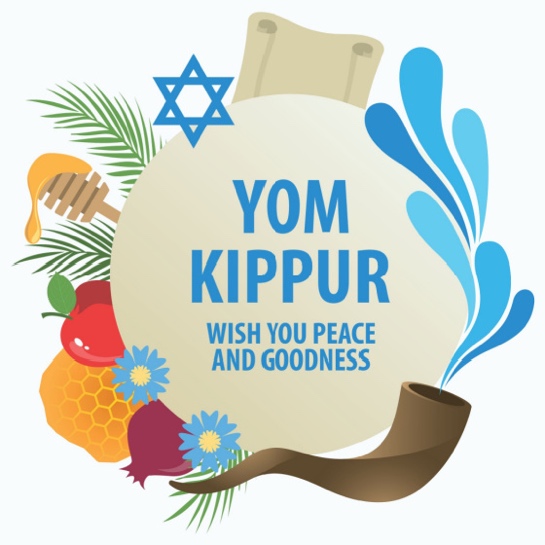Yom Kippur: The Removal of All Sin
16: 1-34

Yom Kippur, or the Day of Atonement, coming as it does at the end of the section on purification, is the climax and crown of Isra’el’s theology of sanctification. It was the holiest day of the year and remains so in Judaism to this day. The essence of Yom Kippur was that the blood of a sacrificial animal was sprinkled on the mercy seat (see the commentary on Exodus, to see link click Fs – The Mercy Seat in the Most Holy Place: Christ at the Throne of Grace) in the Most Holy Place by the high priest to make atonement for himself and for the people, and the sins of the people were placed on a scapegoat that was taken into the wilderness to die, signifying the complete removal of sin and defilement from the people (see the video about Yom Kippur by clicking here).269
The reading of Leviticus Chapter 16 relates the mitzvot for the celebration of the Day of Atonement, or Yom Kippur. This day had the most unusual ceremony in the Torah. It has the story of the scapegoat. The scapegoat is the only sacrifice that is not offered on the bronze altar in the Tabernacle/Temple of ADONAI. It was released into the wilderness. The Day of Atonement is a day in which Jews are commanded to afflict their souls, and it is interpreted as fasting from food, drink, and any other pleasure of the flesh.
This atonement is not for the private sins as individuals. The atonement on the Day of Atonement is for the national, collective sins of Isra’el. There were two goats. One goat was sacrificed for the sins of the high priest and the scapegoat was sacrificed for the sins of the nation. The sins of Isra’el were transferred to the scapegoat by the high priest by the laying on of hands on the head of the goat, and confessing the sins of the nation. Then the scapegoat is released in the wilderness and there the scapegoat dies, and the sins of Israel were taken with this goat into the wilderness.
A part of this ceremony in the time of the Temple in Jerusalem was to cut a crimson ribbon into two parts. Half of the ribbon was tied on the gate of the Temple in Jerusalem. The second half of the crimson ribbon was tied on the horns of the goat.
When the goat died in the wilderness, the crimson ribbon that was tied to the gate of the Temple would turn white. As the text in Isaiah 1:18 says, “Come now, and let us reason together,” Says the Lord, “Though your sins are like scarlet, they shall be as white as snow; Though they are red like crimson, they shall be as wool.”
In the year 30 AD, there was a change in the proceedings of the Temple in Jerusalem. This is what the Talmud said concerning these events in Jerusalem. (The Talmud is a rabbinical collection of discussions concerning the Torah. These discussions are records of what was happening from the 3rd century BC until the 4th century AD). In two Talmudic tractates we have the discussion of what happened in the Temple in the year 30 AD – 40 years before the destruction of the Temple in Jerusalem. Here is a quotation from Babylonian Talmud Tractate Rosh Hashana 31b: After the destruction of the Temple, Rabban Yohanan b. Zakkai made the rule ‘…during the forty-year period in which he “taught,” by that time, the crimson ribbon had already had ceased changing color. The second reference is from Babylonian Talmud Tractate Yoma 39a.
In other words, we have a witness in the rabbinical literature – a witness that is contemporary with the Apostolic era, that says that in the year 30, or 40 years before the destruction of the Temple in Jerusalem, some of the main functions that have to do with the Day of Atonement have ceased to function, and the crimson ribbon stopped turning white as it was doing years before the destruction of the Temple in 70 AD.
Something happened in the year 30 AD that changed the fundamental way that the Temple functioned before 30 AD. The signal that noted when the atonement had actually happened by turning from crimson to white – stopped functioning.
This is significant, dear brothers and sisters. It is a witness that major changes have taken place in the relationship of Isra’el to the Lord God of Abraham, Isaac, and Jacob, one generation – 40 years – before the Temple was destroyed by the Romans in 70 AD. The people of Isra’el are still alive and they are still the chosen people of God, but the issue of atonement by animal sacrifices is mute!270
Yom Kippur is recorded in a chiastic fashion. There is a parallelism, where the first letter is corresponds to the second letter in some way, with the letter E being the turning point.
A. The Purity Issue – 16:1-2 (Cp)
B. The Day of Atonements – 16:3-5 (Cq)
C. The Confessions Over the Bull – 16:6 (Cr)
D. Drawing Lots – 16:7-10 (Cs)
E. Incense in the Most Holy Place – 16:11-13 (Ct)
D. The Blood of the Bull and Goat – 16:14-19 (Cu)
C. The Goat for Azazel – 16:20-22 (Cv)
B. The Cleanser Must be Made Clean – 16:23-28 (Cw)
A. Did Yom Kippur Really Work? – 16:29-34 (Cx)



Leave A Comment